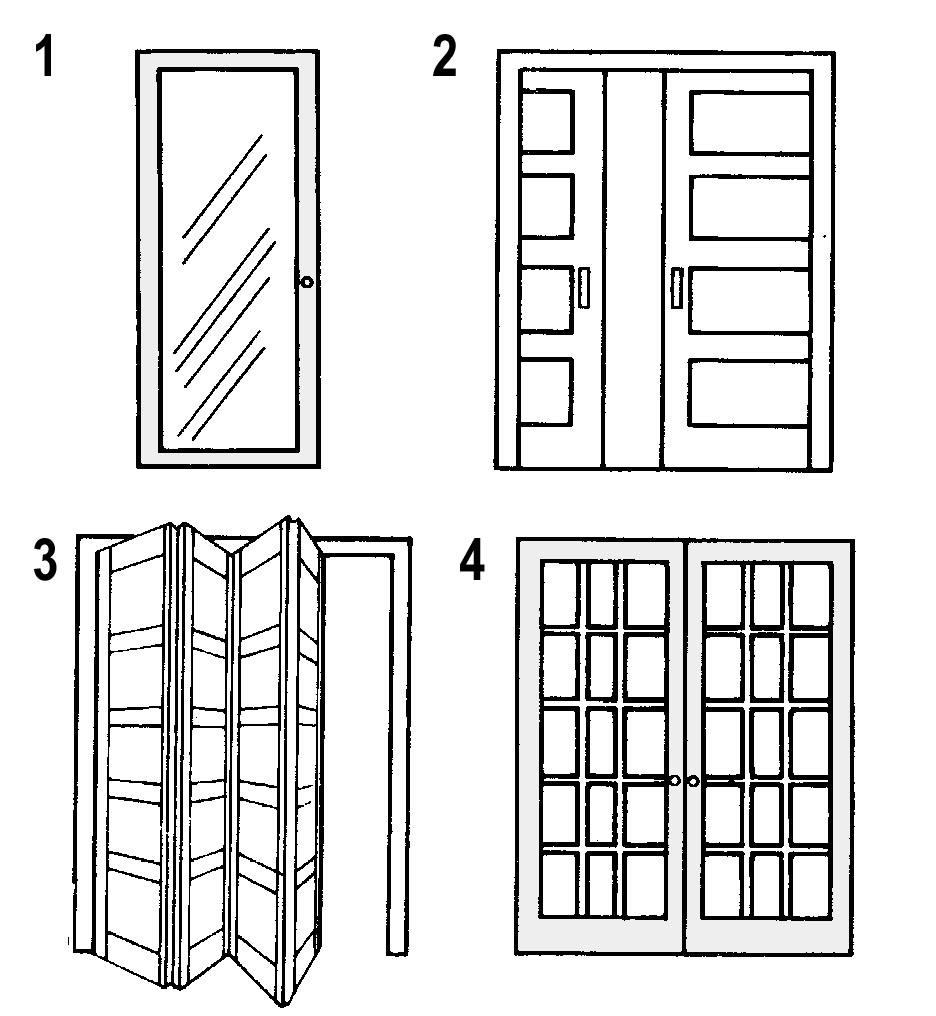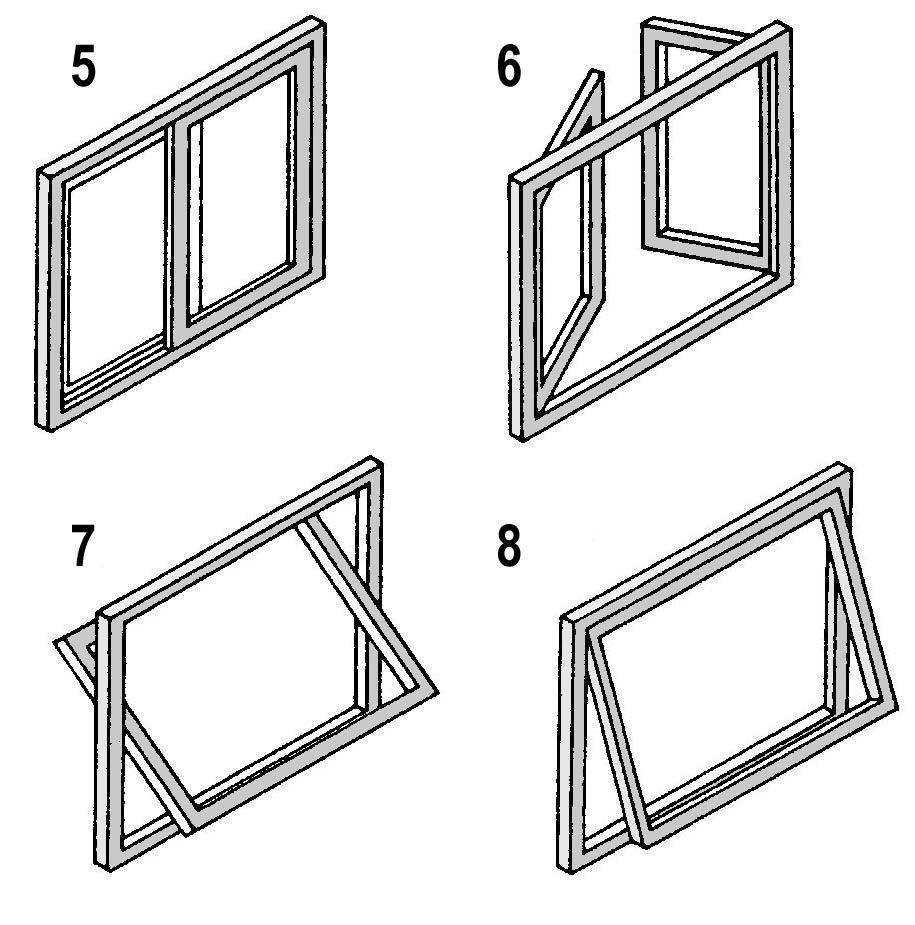
- •Министерство образования и науки российской федерации
- •Contents
- •Unit 1. Building Construction…………………………………………... 5
- •Introduction
- •Unit 1 Building Construction
- •New words:
- •Unit 2 elements of buildings
- •New words:
- •Elements of buildings
- •Unit 3 foundations
- •New words:
- •Foundations
- •Caissons
- •Unit 4 floors
- •New words:
- •Beams and their types
- •New words:
- •Beams and their types
- •Lightweight steel beams and joists introduced
- •Unit 6 shells, trusses and space frames
- •New words:
- •Shells, trusses and space frames
- •Identify the type of the given trusses. Explain the difference between the Pratt and the Warren truss systems.
- •Unit 7 Roofs
- •New words:
- •Aluminium roofs for reservoirs and storage tanks
- •New words:
- •Towards Industrialized Construction
- •Interview your partner about the reasons of moving building construction towards industrialization. Use the following words and expressions.
- •From the history of building construction
- •Assembly works and time-tabling
- •New words:
- •Assembly works and time-tabling
- •Identify each kind of assembly works.
- •Identify the part of the building or the phase of the assembly sequence described in the sentences.
- •References
Elements of buildings
The ultimate purpose of building techniques is to create a stable structure opposing to different forces. Forces acting on any member of a building are, first, its own weight and, second, the loads it carries, principally from other members but also from persons, furnishings, wind, etc. Their action encounters a reaction in opposing forces that hold the member in place by resisting at its joints and within the member itself. These forces are called stresses, and they vary according to the strength of materials and the form of the member. The kinds of stress are compression, which resists crushing; tension, which resists pulling apart; and bending, which occurs when one part of a member is in compression and the other is in tension.
Any building consists of some basic structural elements. According to their functions all the elements are subdivided into load-bearing and non-load-bearing. The former carry the loads of the upper parts of a building and that of snow, wind, etc. The latter, or so-called enclosing units, separate the building from the environment and give privacy to the adjacent rooms and spaces. Some bearing elements, walls for instance, may be considered as enclosing units too.
Walls can be both internal and external. There are retaining walls that are load-bearing and walls attached to the frame of a building and acting only as enclosing ones or curtain walls. The bearing external and internal walls connected with floors form a stiff box (framework) which is able to resist horizontal forces, those of wind, for instance.
Walls can be classified according to their functions into party walls, cross walls, end walls, side walls; or materials used for the construction: log (timber, wooden) walls, masonry walls of stone, slag blocks, brick, concrete blocks and facing panels.
In addition, outer walls can form different elevations according to their position: front (or facade) elevation; back (or rear) elevation and side elevation.
Floors divide a building into storeys or levels. They carry their own weight and that of partitions, screens, equipment, furniture and people and transmit these loads into walls, columns and beams. Floors can be ground, first, second as well as basement and semi-basement ones.
Stairs are means of communication, a part of a circulation area. They consist of steps or treads which constitute runs of stairs. Stairs are contained in staircases or they are open, or free-standing ones. The access to a staircase is called an entrance door or simply entrance or entry.
Partitions or screens rest on floors and divide a building into individual rooms or spaces. They can be movable, solid, glazed and timber ones or other types and materials.
Windows are enclosing elements and serve for lighting and ventilation. They consist of lights and frames, the latters have mullions and transoms. The upper part of a window opening is a window head, the lower being a sill. There can be top-hung windows, sliding windows, pivoted windows, revolution windows, fixed windows and many others.
Doors are enclosing elements and serve for ensuring the communication between the interiors of a building and the environment. They can be inner doors, entrance doors, or sliding doors, folding doors, or casement doors, French doors, etc.
Ceilings are not the main structural elements of a buildings; they are overhead inside surface of rooms or spaces. Nowadays the most widespread type of ceiling in building practice is a suspended one.
Fill in the gaps with the appropriate words.
The ultimate purpose of building techniques is to create a … structure.
Stresses vary according to the … of materials and the … of the member.
The kinds of stresses are … which resists pulling apart, and … , which resists crushing.
… occurs when one part of a member is in compression and the other is in tension.
… elements carry the loads of the upper parts of a building and that of snow, wind and other atmospheric precipitates.
Enclosing units separate the building from the … and give privacy to the … rooms.
Outer walls can form different … according to their position.
Floors divide a building into … .
The most widespread type of … in building practice is a suspended one.
Match the beginnings of the sentences (1 – 7) to their ends (a – g) using the information from the text.
Forces acting on any member of a building are …
Some bearing elements…
The bearing external and internal walls connected with floors form …
Partitions or screens rest on floors and divide …
Windows can be …
Doors can be …
Partitions can be …
may be considered as enclosing units too.
top-hung, sliding, pivoted, revolution and many others.
its own weight and the loads it carries from other members and also from persons, furnishings, wind, etc.
movable, solid, glazed and timber ones or other types and materials.
a building into individual rooms or spaces.
sliding, inner, entrance, folding, casement, French, etc.
a stiff box (framework) which is able to resist horizontal forces.
Define the type of each door and window.


Replace the words and word combinations in italics (A) by their contextual synonyms (B).
A.
The ultimate purpose of building techniques is to create a stable structure opposing to different forces.
Any building consists of some basic structural elements.
Enclosing units separate the building from the environment and give privacy to the adjacent rooms and spaces.
Windows are enclosing elements and serve for lighting and air circulation.
The bearing external and internal walls connected with floors form a stiff box which is able to resist horizontal forces, those of wind, for instance.
B. framework, isolate, construction methods, fundamental, oppose, ventilation, main task.
Answer the questions to the text.
What is the main aim of building techniques?
What are the forces/loads acting upon every element of a building?
What is a stress?
What kinds of stresses do you know?
What types are all the elements subdivided into according to their functions?
What are the load-bearing elements? enclosing units?
What structural elements are there in building practice?
What types of walls do you know?
What are the purposes of windows?
What kinds of windows can you name?
Are doors load-bearing elements? What do they serve for?
What types of doors are there in the building practice?
Give the English equivalents.
устойчивая конструкция
силы противодействия
прочность на растяжение
прочность на изгиб
прочность на сжатие
несущие элементы
ограждающие элементы
передавать нагрузку
With your group-mates fill in the table using the text.
|
|
Type according to function |
Kinds of |
Compound units |
Material used |
|
Walls |
|
|
|
|
|
Stairs |
|
|
|
|
|
Partitions |
|
|
|
|
|
Doors |
|
|
|
|
|
Windows |
|
|
|
|
